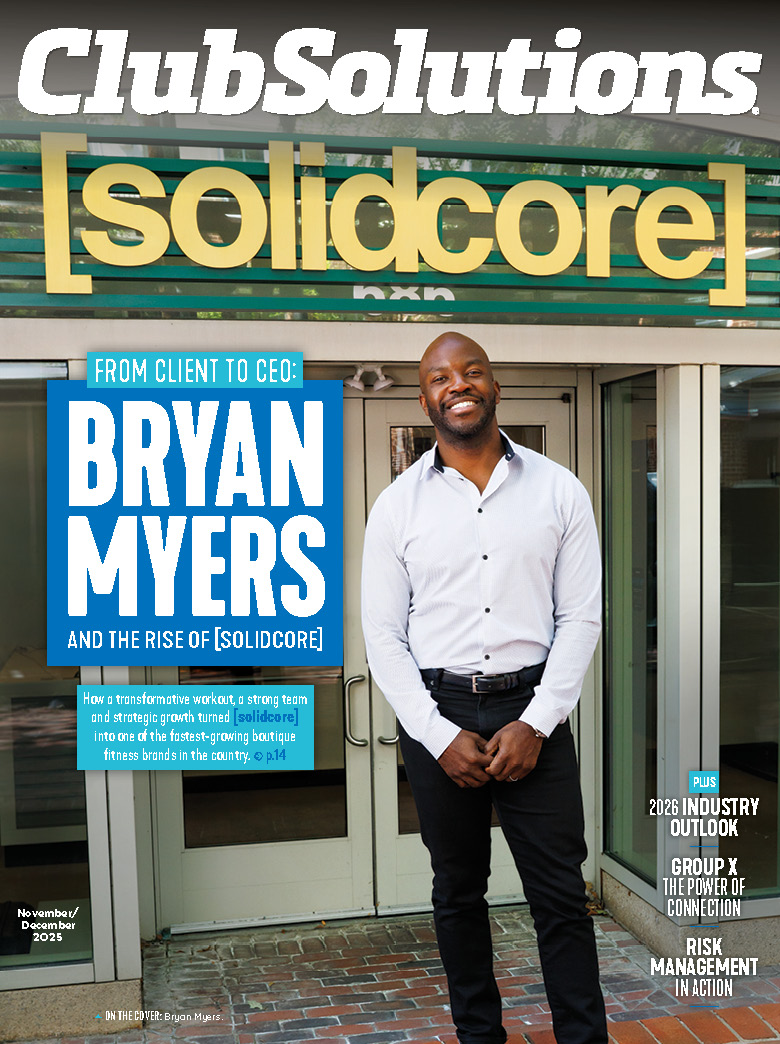In his book, “Great By Choice,” Jim Collins tells a story about Ronald Amundsen and Robert Scott, two explorers who set out on a race to be the first to reach the South Pole. Scott and Amundsen had two different approaches, two different plans to get to the South Pole.
When the weather was permitting, Scott trekked as much as 50 miles in a day. However, when a blizzard hit, Scott would stay in his tent for up to three days, waiting for the weather to pass.
Amundsen, on the other hand, had a more disciplined approach. No matter what the weather was, Amundsen traveled 20 miles. If there was a storm, Amundsen traveled 20 miles. If the weather was favorable, Amundsen traveled 20 miles. Long story short, because Amundsen was specific, methodical and consistent with his approach, he won the race to the South Pole.
The ultimate question to answer is, “What is your 20-mile march?” In other words, no matter how busy you get in your gym, what is your set of disciplines that must get done? What is your specific, methodical and consistent (SMaC) recipe?

We took Amundsen’s lesson to heart and developed our own SMaC recipe in our 21 clubs. Here is what we learned: when our team hit 75% of the SMaC Formula, they hit 90% of their sales goal. This changed the way we run our business.
Let’s break down the SMaC Formula:
1. Both the membership and personal training teams had to set appointments on a daily basis, and they had many different strategies to choose from. All that mattered to us was that each salesperson set “X” amount of appointments. This one was pretty straightforward.
2. On top of three weekly sales calls, one-on-one sales training, and monthly group sales trainings, every sales rep was to practice a certain sales skill set for 20 minutes every day.
3. For the membership team, “check correspondence” is self-explanatory. For the personal training team, each sales rep was to make five contacts off of specific lists that were picked by the sales rep, and his or her manager at the beginning of the month to schedule appointments. The idea is they would weekly review their strategy for setting appointments, and make the necessary adjustments if they are not on track.
4. Our membership team had a pipeline of people they were working on. In this pipeline, you might have:
- Missed guests who were on a trial.
- Missed guests who weren’t on a trial.
- Prospects they said they would get back with.
The goal is for each membership rep to follow up daily.
Our personal training team also had a pipeline of prospects — members they showed personal training rates to, but no sale happened. These prospects were given a plan to execute on their own, and a time scheduled in four weeks to check in and see if the prospect is still motivated and progressing toward their fitness goals. Next to brand new members in the gym, this would be the second hottest lead source for a personal training department. Each personal training sales rep was required to contact one person on that list to check in.
5. Each salesperson was required to make a Corporate Fit Challenge (CFC) connection. CFC is aprogram that was developed by Trina Gray. Connection is an actual conversation or an email back from whomever you are reaching out to. This box didn’t always get checked off because the reps may send out a bunch of emails and not get a hold of a single individual. Each rep had an email list they were building and following up with on a daily basis.
6. Every month, each club had baskets, fliers and swag to hand out, so they could talk to local businesses about what’s happening in their organizations in terms of health and wellness, as well as how we could volunteer our time and energy to assist in any way. Many of these conversations led to us locking down a CFC.
7. Last, and probably one of the most important, daily tasks is to update the whiteboard. Every day, each rep had an appointment goal to hit and a sales goal to hit. Every day, there were activities designed to hit these goals. At the end of every day, all salespeople must know if what they are doing on a daily basis is moving the needle forward. Meaning, are they winning or losing? Most salespeople get disengaged at work because they simply have no idea if their efforts on a daily basis are contributing to what is supposed to be happening. This concept was learned from a book called, “4 Disciplines Of Execution.”
Every week, each sales rep would have their one-on-one meeting with their manager, in which they would discuss sales numbers and daily activities. Of course, sales reps could just check off all the boxes all the time to show completion, however, they could only do that for a little while until it becomes apparent that something is off. These weekly one-on-ones were critical to make sure the team was adhering to the SMAC Formula.
To say this one mechanism revolutionized production in our organization would be an understatement. If your organization is struggling to produce, give this a shot and watch your production go through the roof.
Mike Gelfgot is an Anytime Fitness franchisee.











Great plan!
Great way to stay focused!
Nice article